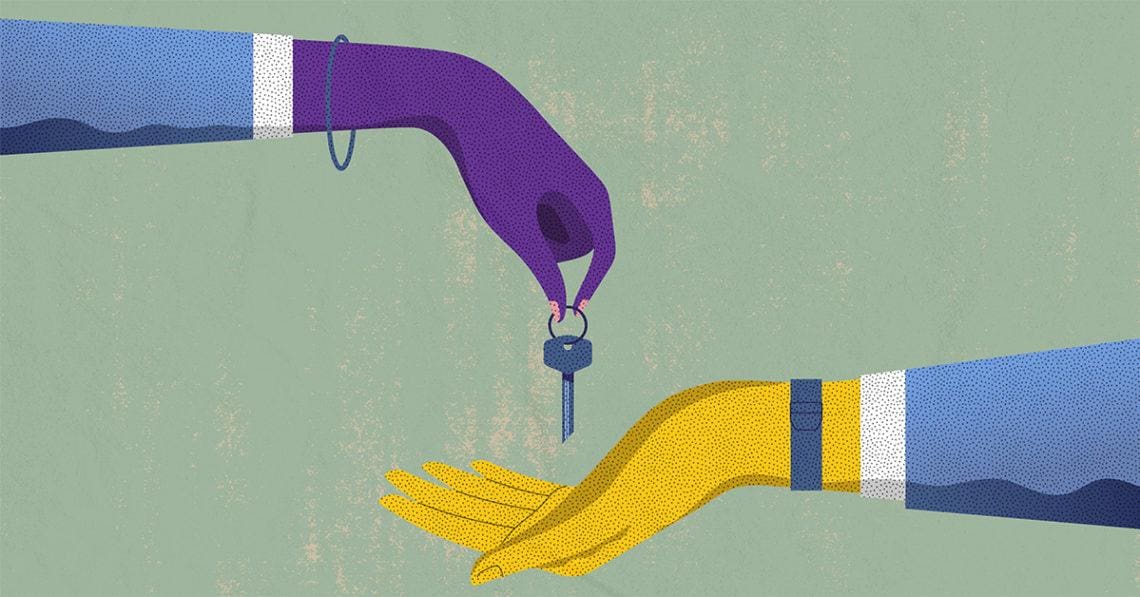High-profile CEO departures put a fine point on a broader corporate trend: Top company leaders are exiting their roles in 2022 in greater numbers than early in the pandemic. Making the wrong hire at CEO can be devastating for a company. That’s why OnBoard founder and CEO Paroon Chadha recommends boards of directors take a proactive and continuing approach to CEO succession planning.
Dave Clark, CEO of Amazon’s worldwide consumer business, Kickstarter CEO Aziz Hasan and DocuSign CEO Dan Springer — each has joined what some are calling “The Great CEO Resignation.”
Few CEOs left their positions at the height of the pandemic as they stayed on to steer their organizations through unprecedented uncertainty. Now, a surge of postponed CEO departures has begun: Earlier this year, data from executive placement firm Challenger Gray & Christmas found that CEO departures from U.S. public companies rose 56% in 2022’s first quarter from a year earlier.
For many boards and the businesses they lead, the Great CEO Resignation will be quickly followed by the Great CEO Succession. If boards and directors don’t take the steps to prepare a succession plan — and update it regularly — surprise CEO departures can create significant costs and risk for their companies and stakeholders.
A total of 668 CEOs exited their roles between January and May 2022, the highest number Challenger, Gray & Christmas recorded since the firm began tracking this data in 2002. And while the pace of CEO changes has slowed over the past few months, CEO turnover has major ripple effects across an entire organization.
The impact on employees and shareholders is obvious, but the effect in the boardroom can be more severe. When a CEO departs, the board is not just losing a valuable leader but crucial information and knowledge about sensitive company details and a wealth of so-called “tribal knowledge.” Not to mention, a CEO departure can greatly impact the board composition and individual directors’ engagement as the search for a new CEO begins.
Lack of planning is expensive and hiring is hard
In a typical year, 10% to 15% of companies appoint a new CEO. But despite the inevitability that all CEOs will eventually leave their positions for one reason or another, most organizations are not prepared to replace them, research has indicated.
A 2010 survey by search firm Heidrick & Struggles and Stanford University revealed critical lapses in CEO succession plans. Among Fortune 500 companies, only 54% of boards were proactively developing a CEO successor and 39% had no viable internal candidates who could immediately replace the CEO if they should exit.
All this poor planning comes at a high cost: The failure to develop a comprehensive succession plan for changes in leadership is estimated at $112 billion in market value.
Lack of preparedness is only part of the problem. Equally challenging is that boards often find the wrong replacement. Estimates vary, but previous studies have indicated that about 40% of new CEOs resign, are asked to leave or are found to be performing well below expectations within 18 months of being hired.
Planning for the next CEO
Planning for the next CEO is one of the board’s most important responsibilities. Having a CEO succession plan in place is insurance for an emergency or crisis, especially if a CEO departs suddenly for unexpected reasons. Thorough board succession planning helps organizations:
- Minimize potential disruption from unexpected departures
- Ensure smooth leadership transitions
- Plan for future leadership needs
- Assure the CEO is aligned with organizational needs and strategic objectives
Best practices for CEO succession planning
CEO succession is not a one-time task; it is an ongoing risk management operation that bolsters the success of a company. Boards need to revisit their succession plans periodically to make sure it’s accurate and up to date.
In particular, the board should:
- Find common ground when evaluating goals. A major roadblock to finding the right CEO is assessing where the company is now and considering what circumstances will impact the relevance of the existing model of short- and long-term goals of the company over the next three to five years. Are there potential risks with how the outside world is changing? Is the company culture changing? It’s critical that the board come to a consensus.
- Identify skills of the next CEO. Boards need to routinely revisit the CEO’s job description, as outside influences could greatly impact if that leader’s skills are right for the current climate. For example, the CEO who was right to steer the company through the pandemic may not be the right one to take the company through a recession. The skills you were looking for in a CEO just a few months ago may be less important or even irrelevant in the current moment. The CEO job description must remain up to date so the board can find the right person for the job at the right time.
- Develop a pipeline of talented candidates. Having a shortlist of candidates who meet the updated job requirements is an assurance that a successor or interim successor can move into the position without any material loss of continuity in organizational leadership. Creating a pipeline of candidates with a development plan for each that coincides with the end of the planned tenure of the current CEO will also help ensure a smooth transition. Many boards take advantage of leadership development programs that train potential candidates with coaches and mentors within the organization to create a seamless transition when the time comes. It’s critical that boards perform periodic executive preparedness assessments to gauge whether those candidates remain prime successors for the CEO position.
- Have a backup emergency succession plan. Considering the recent rise in CEO departures, boards without a backup plan for a sudden, unexpected departure could risk a company’s financial future and relationships with stakeholders. It’s critical for the board to identify strong interim candidates who can move into the job quickly, whether it’s the CFO, COO or external candidates who are being developed for the position. In many cases, the replacement includes a board director who steps into the role in the short term while the board searches for a long-term solution.



 Paroon Chadha co-founded OnBoard (Passageways) in 2003 and continues to lead its business strategy as CEO. He serves on boards at Passageways, Big Brother Big Sister of Greater Lafayette, Indiana University Simon Cancer Center and TechPoint. He was a founding member of Youwecan.org and is an angel investor in several technology companies.
Paroon Chadha co-founded OnBoard (Passageways) in 2003 and continues to lead its business strategy as CEO. He serves on boards at Passageways, Big Brother Big Sister of Greater Lafayette, Indiana University Simon Cancer Center and TechPoint. He was a founding member of Youwecan.org and is an angel investor in several technology companies.









